This week we had the pleasure of visiting Deep Woods Farm, located in hocking hills. This location has very acidic, sandstone soil, which is great for plants specializing in that kind of substrate.
Four acidophile plants we found during our trip are listed below.
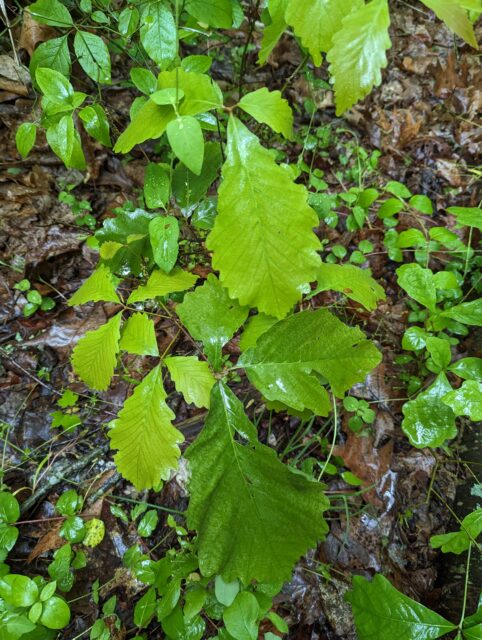
Common name: Chestnut oak
Scientific name: Quercus montana
Chestnut oaks are Broad leafed plants with alternate simple leaves. They have rounded leaves, with 7-12 pairs of teeth. They also have acorns with bowl-shaped cups.
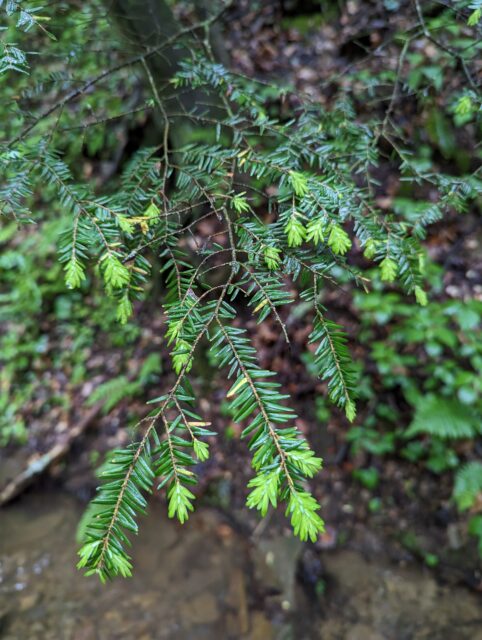
Common name:Eastern Hemlock
Scientific name: Tsuga Canadensis
Eastern Hemlock is a plant with needle-like evergreen leaves. Slender stalks attach the needles, and the twigs are rough. They are often found in well-drained or moist woods. Their needles also have two white stripes beneath them.
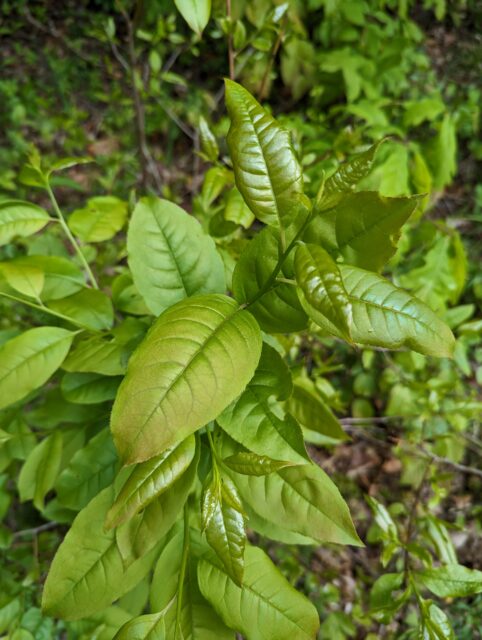
Common name: Sourwood
Scientific name: Oxydendrum arboreum
Sourwood is a broad-leaved tree with alternate simple leaves. Those leaves are egg-shaped and hairy on the underside. It has fruits that have 5-parted clusters, those being one-sided.
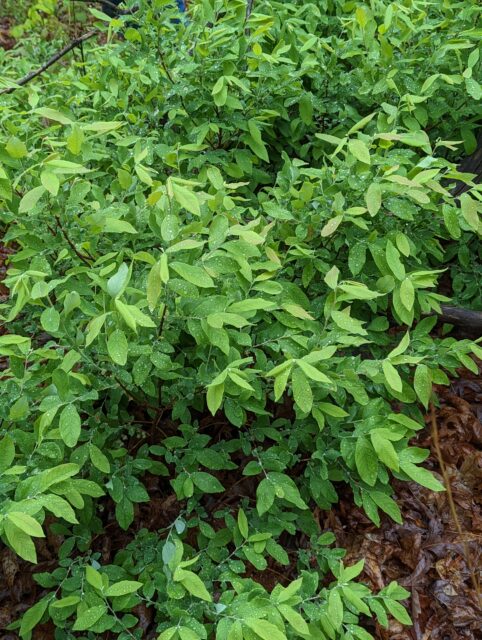
Common name: Deer Berry
Scientific name: Vaccinium stamineum
Deer Berry is a shrub with egg to elliptic-shaped foliage. The leaves are thin and untoothed. It produces small white bell-shaped flowers and purplish-black berries.
We also explored a lot of fern species while we were there, and I had a lot of fun seeing just how much variety there was.
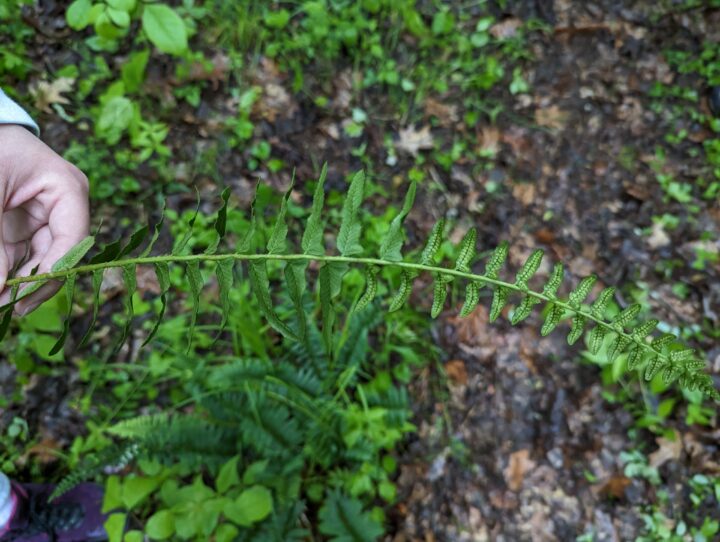
Common name: Christmas fern
Scientific name: Plystichum acrostichoides
Frond type: Hemidimorphic
Frond dissection type: Pinnate
Indusium type: Reniform
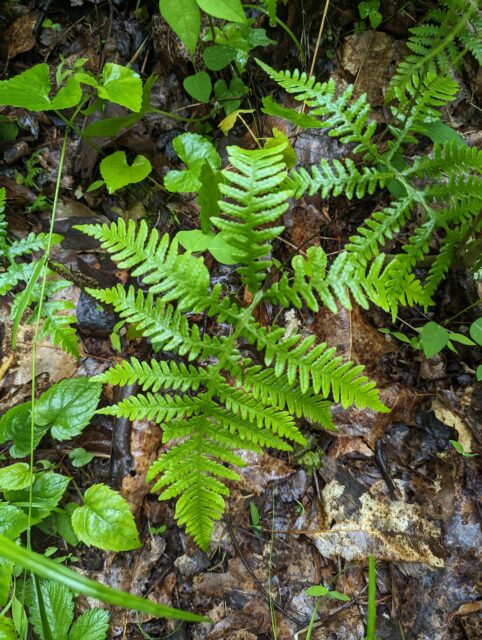
Common name: Broad beech fern
Scientific name: Tyelypteris hexagonoptera
Frond type: Monodymophic
Front dissection type: pinnate pinnatifid
Indusium type: none
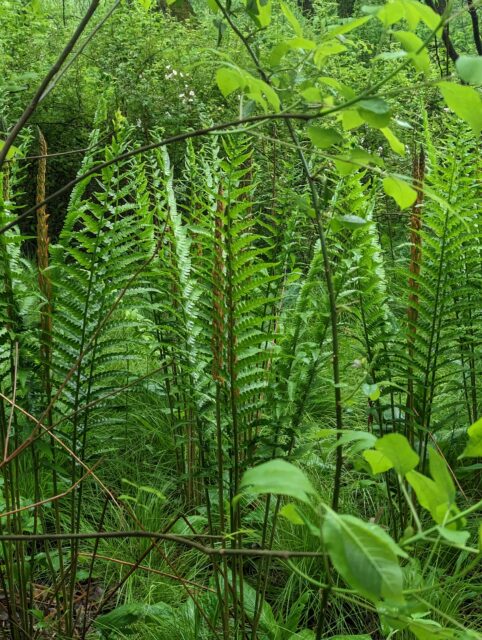
Common name: Cinnamon Fern
Scientific name: Osmunda cinnamomea
Frond type: Holodimorphic
Frond dissection type: Pinnatifid
Indusium type: Sori are concealed in capsule-like structures. These structures are modified leaflets
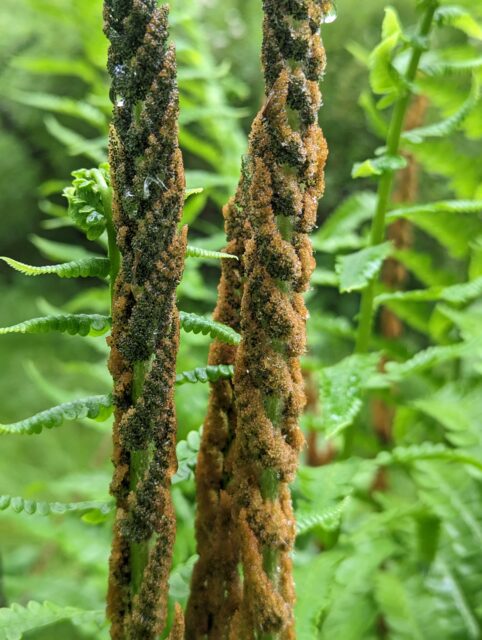
Fertile fronds of the Cinnamon fern.
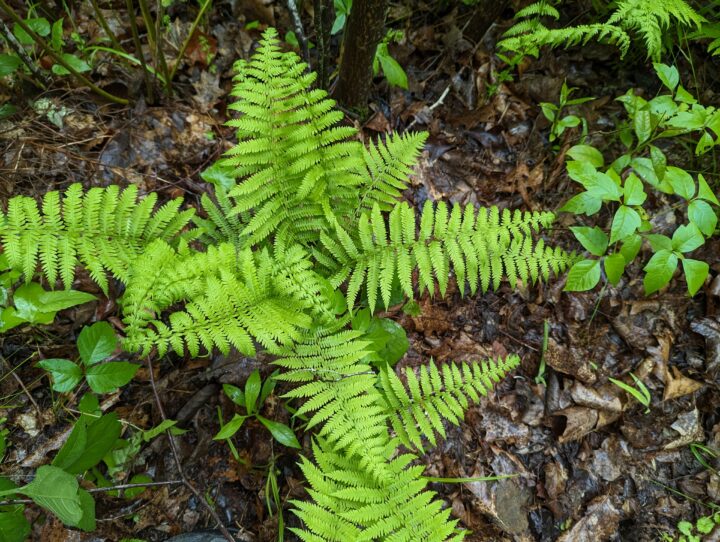
Common name: New York Fern
Scientific name: Thelypteris noveboracensis
Frond type: Monodymorphic
Frond dissection type: Pinnate-Pinnatifid
Indusium type: Reniform
As is bound to happen, we also found invasive plants on the property.
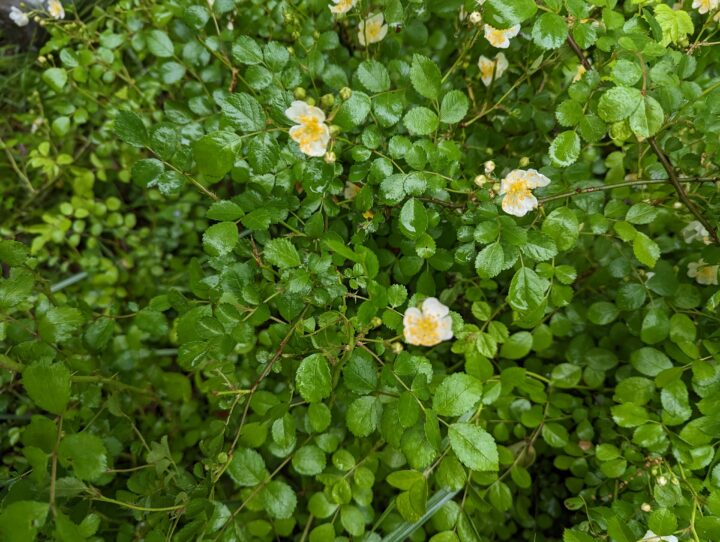
Common name: Multiflora Rose
Scientific name: Rosa multiflora
Multiflora rose is a shrub with finely toothed leaflets and numerous white flowers. Leaflets usually range from 7-9.
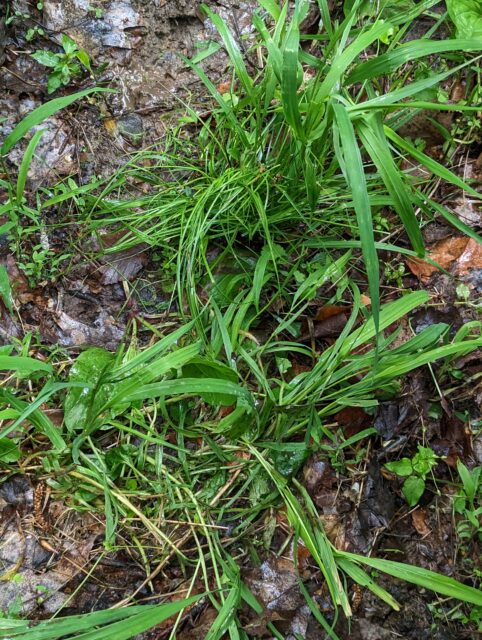
Common name: Japanese stiltgrass
Scientific name: Microstegium vimineum
Japanese stiltgrass is a highly invasive plant that thrives in a wide range of habitats. It can grow up to 3.5 feet tall, with the leaves being 1-3 inches long. They have an alternate arrangement and are lance-shaped(nyis,2019).
My personal assignment for this site was to identify two zygomorphic plants. This means a plant with bilateral symmetry.
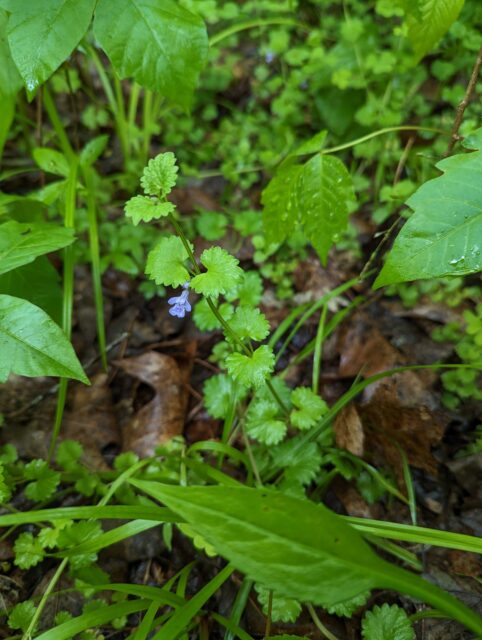
Common name: Ground Ivy
Scientific name: Glechoma hederacea
Ground Ivy is a wildflower with opposite, bluntly toothed leaves, and ½” long blue or violet flowers. It is in the mint family and a common weed.
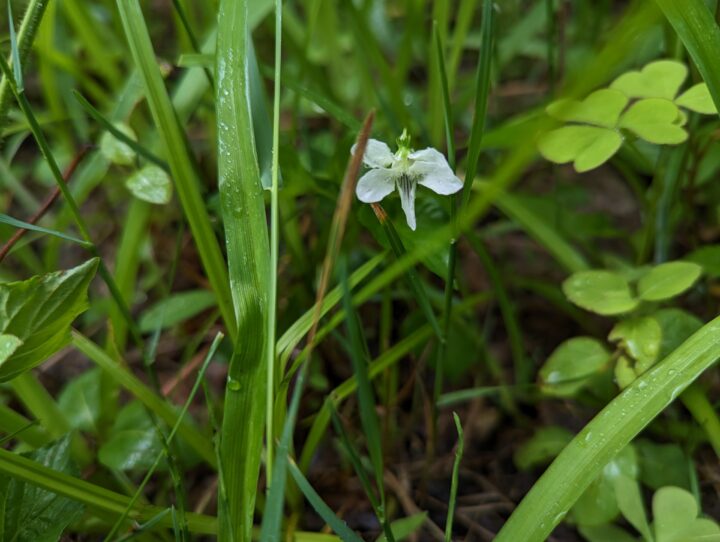
Common name: Pale Violet
Scientific name: Viola Striata
Pale Violet is a wildflower with alternate, heart-shaped leaves. It has cream-to-milk white zygomorphic flowers.
We also found a special species hiding away in a small cave on the property, Applachian gametophyte.
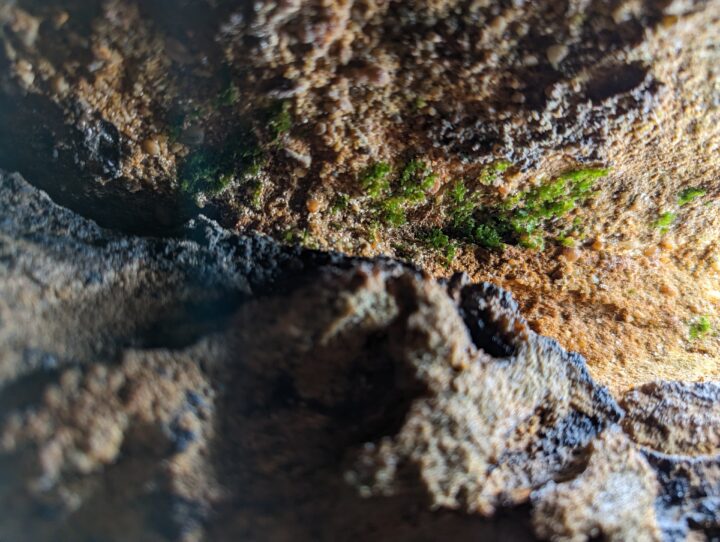
Appalachian Gametophyte (Vittaria appalachiana)
After reading the article Unvareling the origin of the Appalachian gametophyte, Vittaria appalachiana, I began to gain some insight about the species.
The common name of the species Vittaria appalachiana is Appalachian gametophyte. This name is well suited for the species, as it lives almost exclusively in the Appalachian mountains and the eastern United States. The Appalachian gametophyte is so special because it grows as a vegetatively reproducing gametophyte, without sporophytes. It does this by reproducing asexually using gemmae that disperse short distances and reproduce independently.
Fern Gemmae are larger than spores, with the former being 0.2-1.0mm in length. This makes it harder to disperse via wind. However, they can still disperse shorter distances with water, wind, and animals. Some animals that have been studied to do this are slugs and ants. Slugs trap the propagules in their secretion, dispersed along their slime trail (Kimmerer and Young, 1995).
Some evidence that the gemmae are only dispersed short distances is that they are not found past the last glacial maximum. It has been proven that they are able to survive in these further areas, however. This means that V. Applachiana has lost the ability to produce sporophytes, even though it previously could. This loss was calculated to have occurred before or during the last ice age, according to its current range.
It was previously thought that Appalachian gametophyte was a product of interspecies hybridization, however, that is not true. It has also been studied and disproved that the species is being sustained by long-distance dispersal from a tropical sporophyte source (Farrar, 1990). It also would not be feasible as there is a section of V.Applachiana in southern new york. The more likely explanation is that the species did at one point have a functioning sporophyte, which was supported by the temperatures and climate found in the Appalachians. This sporophyte, however, became extinct during the Pleistocene glaciations, and therefore the species has not been able to disperse further.
Sources
https://gobotany.nativeplanttrust.org/species/osmundastrum/cinnamomeum/
https://ohioplants.org/wp-content/uploads/2019/09/Unraveling-the-origin-of-the-Appalachian-gametophyte.pdf
https://nyis.info/invasive_species/japanese-stiltgrass/
